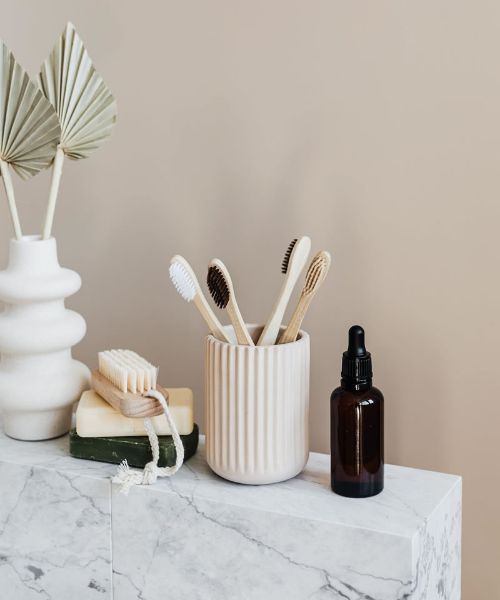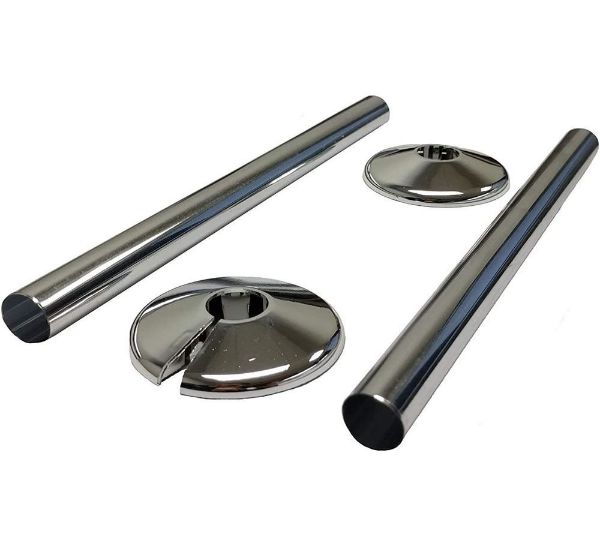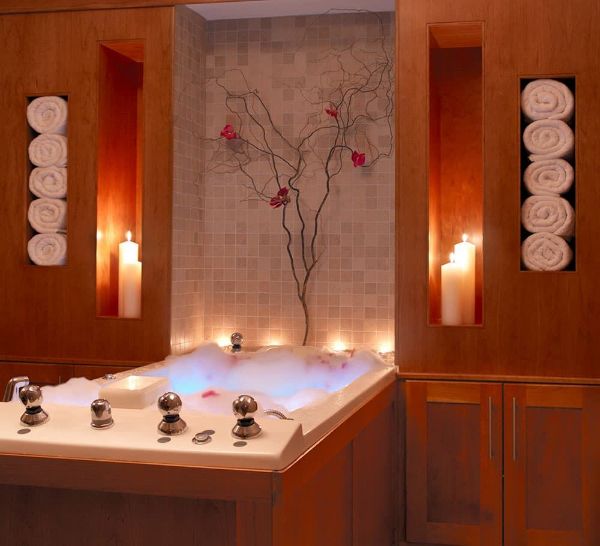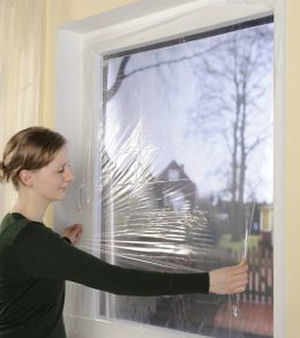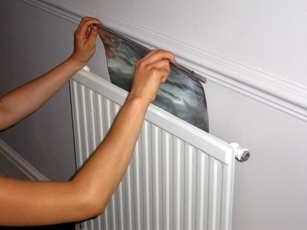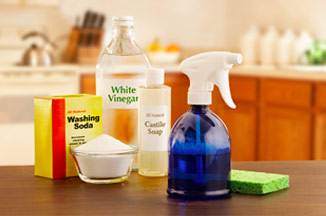Adige Blog
Radiator pipe covers are a great way to add style and functionality to the radiator and its surrounding area. They come in various materials, shapes and sizes, so choosing the right one for your application is essential. In this guide, we’ll explore the different types of radiator pipe covers, their benefits, installation and maintenance tips, and more.
Introduction to Radiator Pipe Covers
Radiator pipe covers are a great way to give your radiator a new look and keep it in good condition. They are available in various materials, shapes and sizes, so you can easily find one that fits your needs. Radiator pipe covers are also helpful for hiding unsightly pipes and wires and providing insulation against heat loss.
Types of Radiator Pipe Covers
Radiator pipe covers come in a variety of materials, shapes and sizes. Some of the most popular radiator pipe covers include chrome, copper and plastic. Each material has advantages and disadvantages, so it’s essential to choose the right one for your application.
Chrome radiator pipe covers:
Chrome radiator pipe covers are a great way to give your radiator a sleek, modern look. Also, they are easy to clean and maintain, and they come in a variety of shapes and sizes. Chrome radiator pipe covers are also resistant to rust and corrosion, making them a great choice for areas with high humidity.
Copper pipe cover:
Copper pipe cover is another popular option for radiator pipe covers. Copper is a great insulation material, as it is an excellent conductor of heat. Copper pipe covers are durable and can last for years with proper care and maintenance.
Plastic radiator pipe covers:
These are an excellent choice for those on a budget. They are available in various colours and styles, so you can easily find one that fits your needs. Plastic radiator pipe covers are lightweight and easy to install, making them a great option for those who really want to save time and money.
Benefits of Using Radiator Pipe Covers
Radiator pipe covers are a great way to give your radiator a new look and protect it from damage. The covers are available in a variety of materials, shapes and sizes, so that you can easily find the one that fits your needs. Radiator pipe covers are also useful for hiding unsightly pipes and wires, as well as providing insulation against heat loss.
In addition to giving your radiator a new look, radiator pipe covers also provide added protection against damage. They are available in various of materials, so you can easily find one that is resistant to rust and corrosion. Radiator pipe covers also help to keep your radiator clean, as they can trap dirt and debris.
Radiator pipe covers are also a great way to add insulation to your radiator. They are available in various of materials, so you can easily find one that provides the right amount of insulation for your application. Radiator pipe covers also help to reduce heat loss, making them a great choice for areas with high humidity.
How to cover radiator pipes
Covering radiator pipes is a relatively simple process. Depending on the type of radiator pipe cover you are using, the installation process may differ slightly. Generally speaking; however, the installation process is fairly straightforward.
Before you begin, make sure that you have all the necessary materials and tools. You will need a screwdriver, a drill, a hacksaw, and the appropriate screws and bolts. It’s also a good idea to have an assistant to help you with the installation.
Once you have all the materials and tools you need, you can begin the installation process. Start by removing any existing covers from the radiator. Make sure to take note of the size and shape of the radiator pipe covers you are installing, as this will help ensure that the installation is done properly.
Next, mark the location of the radiator pipe covers on the wall. Make sure to measure twice and mark once to ensure that the covers are installed in the correct location. Once the locations have been marked, you can begin drilling the holes for the screws and bolts.
Once the holes have been drilled, you can attach the radiator pipe covers to the wall. Make sure to use the appropriate screws and bolts for the type of radiator pipe cover you are installing. Once the covers have been attached, you can plug the wires and pipes into the radiator.
Different Materials Used in Radiator Pipe Covers
Radiator pipe covers are available in various materials, so choosing the right one for your application is essential. Some of the most popular materials used in radiator pipe covers include chrome, copper and plastic. Each material has advantages and disadvantages, so it’s essential to choose the right one for your application.
Chrome radiator pipe covers are a great way to give your radiator a sleek, modern look. Also, they are easy to clean and maintain, and they come in a variety of shapes and sizes. Chrome radiator pipe covers are also resistant to rust and corrosion, making them an excellent choice for areas with high humidity.
Copper pipe cover is another popular option for radiator pipe covers. Copper is a great insulation material, as it is an excellent conductor of heat. Copper pipe covers are durable and can last for years with proper care and maintenance.
Plastic radiator pipe covers are an excellent choice for those on a budget. They are available in various colours and styles, so you can easily find one that fits your needs. Plastic radiator pipe covers are lightweight and easy to install, making them an excellent option for those who want to save time and money.
Chrome Radiator Pipe Covers
Installation of chrome radiator pipe covers is relatively simple. Start by measuring the area where the covers will be installed. Make sure to measure twice and mark once to ensure that the covers are installed in the correct location. Once the locations have been marked, you can begin drilling the holes for the screws and bolts.
Chrome radiator pipe covers are easy to clean and maintain. To keep them looking their best, it’s important to regularly dust them off and wipe them down with a damp cloth. Chrome radiator pipe covers are also resistant to rust and corrosion, so you don’t have to worry about them deteriorating over time.
Copper Pipe Cover
Installation of copper pipe covers is similar to that of chrome radiator pipe covers. Start by measuring the area where the covers will be installed. Make sure to measure twice and mark once to ensure that the covers are installed in the correct location. Once the locations have been marked, you can begin drilling the holes for the screws and bolts.
Copper pipe covers are easy to clean and maintain. To keep them looking their best, it’s important to regularly dust them off and wipe them down with a damp cloth. Copper pipe covers are also resistant to rust and corrosion, so you don’t have to worry about them deteriorating over time.
Other Types of Radiator Pipe Covers
In addition to chrome and copper, there are a variety of other materials used in radiator pipe covers. These include plastic, stainless steel and aluminium. Each material has its advantages and disadvantages, so it’s important to choose the right one for your application.
Plastic radiator pipe covers are an excellent choice for those on a budget.
They are available in various of colours and styles, so you can easily find one that fits your needs. Plastic radiator pipe covers are lightweight and easy to install, making them a great option for those who want to save time and money.
Stainless steel radiator pipe covers are a great choice for those looking for a durable, corrosion-resistant material. Stainless steel is also highly resistant to rust and corrosion, making it a great choice for areas with high humidity. Stainless steel radiator pipe covers are also easy to install and maintain.
Aluminium radiator pipe covers are an excellent choice for those looking for a lightweight material. Aluminium is also a great conductor of heat, making it a great choice for insulation. Aluminium radiator pipe covers are also easy to install and maintain.
Maintenance and Care of Radiator Pipe Covers
It’s important to regularly maintain and care for your radiator pipe covers to ensure that they last for years to come. To keep them looking their best, it’s important to regularly dust them off and wipe them down with a damp cloth. It’s also important to check for any signs of rust or corrosion, as this can cause the covers to deteriorate over time.
In addition to regular cleaning and maintenance, it’s also important to inspect the radiator pipe covers for any signs of damage. If you notice any cracks or holes, it’s important to replace the covers as soon as possible to prevent further damage.
Conclusion
Installing radiator pipe covers is a relatively simple process. Depending on the type of radiator pipe cover you are using, the installation process may differ slightly. Generally speaking; however, the installation process is fairly straightforward.
It’s also important to regularly maintain and care for your radiator pipe covers to ensure that they last for years to come. To keep them looking their best, it’s important to regularly dust them off and wipe them down with a damp cloth. It’s also important to check for any signs of rust or corrosion, as this can cause the covers to deteriorate over time.
If you’re looking for a quick and easy way to give your radiator a new look and protect it from damage, radiator pipe covers are a great option. Buy the radiator pipe covers from towelradiator.co.uk to get the best quality and value for your money.
The main bathroom is often one of the most underrated parts of a house. Just because it is one of the smallest rooms, people who are decorating or renovating often think it needs less thought put into aspects like colour and lighting than the living room, kitchen, or bedrooms. In actual fact, how comfortable and luxurious your bathroom is can make quite a difference to how it feels to live in or visit your home, and so it is worth putting some time into planning out the details. This doesn’t just mean the main fixtures like the shower or bath, but also aesthetic elements like lighting.
Why is Lighting Important in a Bathroom?
You may think that as long as you aren’t trying to shower or use the toilet in the dark, then the lighting in your bathroom is fine. Actually, with good lighting, your bathroom can become a more relaxing place in the evening, a more energising place in the morning, and a more convenient place to do things like put on makeup, style your hair or shave. This generally means that you need to think about separate lighting elements – your above mirror lighting, lighting for the room in general, and possibly also lighting for the shower or bath.
LED is Always Best
When it comes to bathroom lighting, always go for LED for new or refurbished fittings. LED lasts longer, is more energy efficient, and gives you more choice when it comes to light tones or colours. Plain LED lights allow you to choose between blue, yellow or white tones for your light, and in the bathroom, a yellow tone that emulates sunlight is preferable. This is because it is less harsh and gives you a better impression of how you actually look in daylight when you are getting ready in front of the mirror. White or blue tones can be effective as a style choice for the whole room, but if you are using spotlights above the mirror, a warmer tone is better there.
Colour Changing Lights
It is currently quite fashionable in interior design to use colour changing lights in showers, and there is a good reason for this. It has been shown by psychologists that different colours from the light spectrum have different effects on the brain. This means that being able to change the lighting in your shower is not just a cool gimmick but can actually be used to help relax you or wake you up. Naturally, this makes taking a shower is a better experience, and also looks great, so consider getting a colour changing LED light system for your shower. These are less expensive than they were just a few years ago and can make a big difference to how luxurious and pleasant using your home shower is!
As you can see, bathroom lighting is important when you are trying to make your bathroom as convenient as possible, just as other things like heated towel rails can make your bathroom one of the nicest parts of your home, despite it being small!
Homes come in all shapes and sizes and for many people, as long as they have a roof over their head, they don’t care whether the home has one floor or ten. But if you are looking at buying a new home, you might be wondering whether a flat or a house is going to be a better choice. Both are likely to be on offer, although if you are looking at inner city properties, flats will be more prevalent than houses. So what are the main differences and what do you need to be aware of before investing?
Leasehold Vs Freehold
Flats are normally leasehold whereas houses are freehold. This creates a lot of problems and can make it harder to sell the property or obtain a mortgage if there are not many years left on the lease. If you are considering buying a flat, always take specialist advice on the subject of leases, as they can be very restrictive.
Extra Expenses
When you buy a house, you expect to pay the usual expenses such as gas, electricity, etc. With flats it can be a bit different and there are sometimes ground rent and service charges to take into account. You may also be expected to contribute to major building repairs such as a leaking roof, even if your flat is not affected, so once again, take advice before buying.
Size Matters
Although there is a common perception that flats are smaller than houses, this is not true at all. Many flats are just as spacious as houses and encompass just as many square feet of living space. You may even find a flat with living space split over two floors. However, if you want a property with multiple bedrooms and a large amount of living space, there will be a lot more houses to choose from. And if you are short of money and can’t afford a large home, the opposite will be true and flats are likely to be at the top of the affordability scale.
Shared Space
Most flats have some degree of communal space, be it a shared landing and staircase or a communal hallway. This doesn’t mean that you will ever see any of your close neighbours, but if you are the solitary type who prefers to avoid other human beings, a flat might not suit you. It is possible, however, to find self-contained flats with their own private entrance that feel like houses rather than flats. These are perhaps the best of both worlds.
Noise Levels
A lot of modern houses, particularly low-cost homes, are built in very close proximity to one another, with paper-thin walls. This can lead to noise problems if you have neighbours who like the sound of their rock music and enjoy arguing at 3AM in the morning. Flats can be even worse and there is nothing worse than listening to an ignorant resident in the flat above stomping around and making a racket for hours. The only way to avoid this problem is to buy a detached house on a large plot.
Accessibility
People with mobility problems will find it hard to cope with stairs, which rules out most homes built over more than one level. Since flats tend to be built on one level, they are a good choice for people with disabilities, although anything above ground level may represent a problem unless there are elevators in the building. If you still want to live in a house, your best option is to opt for a bungalow.
Ultimately, whether you buy a house or a flat will be a decision governed by your personal circumstances and the property available, but do make sure you take expert advice before investing any money in property.
Whether you are a DIY enthusiast or not, there are some gadgets and power tools you really should invest in. You don’t necessarily need to be skilled at DIY to use them, but if you do decide to undertake a DIY project such as removing a vertical designer radiator from the wall in order to strip off old wallpaper, a few handy tools will make life so much easier. So what tools and gadgets are worth investing in?
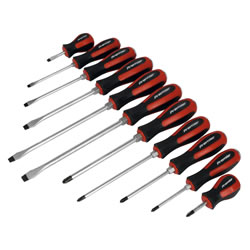 | A Multi Purpose Screwdriver SetEvery home should have a set of screwdrivers stashed away in a drawer somewhere. Screwdrivers come in handy for all kinds of things. From opening a plug to change a fuse to tightening up a hinge on a door, there will come a time when you need a screwdriver, so make sure you have at least one of each variety available. |
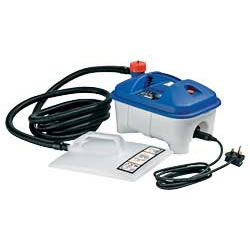 | Steam Wallpaper StripperScraping off wallpaper by hand is a backbreaking job if you are tackling decades of ugly woodchip painted in magnolia. By contrast, most wallpaper will come off pretty easily if you use a steam wallpaper stripper. The only thing you need to be careful of is that if you get a bit too enthusiastic with the steam, you might notice chunks of plaster falling off too. |
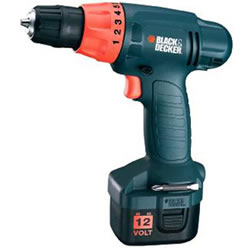 | Power DrillYou can’t put up a shelf without a power drill. Well, you could, but it might not stay up for more than five minutes. Electric drills are cheap and easy to use. Choose from corded economy drills or upgrade to a cordless drill for outdoor projects. For simple DIY projects, go for a cheap and cheerful brand, but if you plan on building an extension, look at quality brands such as Makita or Bosch. |
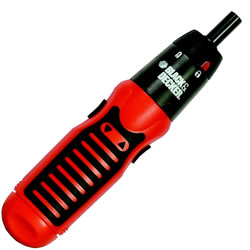 | Electric ScrewdriverIf you are a big fan of flat-pack furniture, an electric screwdriver will make your life an awful lot easier. Instead of sweating away with an old screwdriver, you can get the job done in half the time. And the good thing about electric screwdrivers is that they often come with a selection of multi-functional accessories, such as corkscrews, so if you are struggling to uncork a bottle of wine, pull out your trusty electric screwdriver and get Happy Hour off to a fine start. |
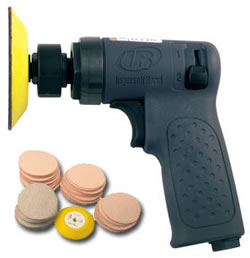 | Mini SanderIn order to achieve a professional finish when painting skirting boards and doorframes, you need to sand the wood down to remove lumps, bumps and imperfections. To do this by hand takes ages and the end result is not always that great. Investing in a mini sander will make life a lot easier. You can also use mini sanders to renovate wooden furniture if you fancy introducing a bit of ‘shabby chic’ into your home. |
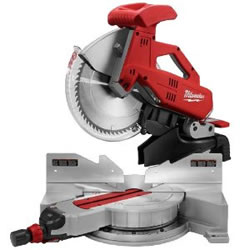 | Chop SawChopping sticks for the fire is a pain when you have to do it by hand. A far easier way of chopping small sticks for kindling is to use a chop saw instead. Chop saws are great if you have a huge pile of timber off-cuts. It takes minutes to zap through a stack of wood and turn it into kindling size pieces. For larger pieces of timber (for example old pallets), a circular saw is a better choice, although this requires more strength to wield for any length of time. |
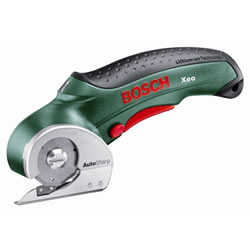 | Universal CutterA universal cutting tool is like a penknife on steroids. With one of these little gadgets you will be able to cut through just about anything: carpets, vinyl flooring, electric cabling, and anything else you need to sever in two. |
This is just a small selection of the many DIY gadgets you will find at your local DIY store, but with one or two of these in your garage, you should have most DIY projects covered.
Once the weather turns colder, heating becomes a priority. Living in a cold home is plain miserable, but if you can’t afford to have the central heating on for more than an hour a day, you may have little choice but to wrap up in lots of thick, woolly jumpers and dance in front of the TV when your toes turn blue. So what cheap things can you do to ensure your home stays warm and cosy this winter? Prevent Heat Loss through WindowsA large percentage of heat is lost through windows. Installing expensive double-glazing will make a difference, but if you can’t afford to do this then try replacing your thin, fashionable curtains and blinds with some thick, heavy duty drapes. And if you can’t afford to replace your curtains, buy some old blankets and hang these up over doors and windows at night, or line existing curtains with an extra layer of fleece. |  Credit to: www.bbc.co.uk |
| Window Film for Single Glazed UnitsExtra heat protection for windows can be bought in the form of self-adhesive window film. It is very easy to fit – apply to the window frame using tape and fix in place with a hot hair dryer. You won’t be able to open the window once you have fitted window film, but it’s cheap enough to replace every year.
Keep Radiators ClearRadiators need space around them. Placing large items of furniture in front of radiators means the heat they emit will be absorbed instead of spreading out into the room. You can also maximise heat from radiators by putting a shelf above it to channel the hot hair outwards. This is particularly useful if a horizontal radiator is fitted beneath a window, as it will stop the heat from being trapped behind curtains and blinds. Another way of making radiators more efficient is to stick aluminium foil on the wall behind the radiator. This works to reduce heat loss through walls by reflecting heat back into the room. It is very useful for radiators fitted into external walls. Purpose designed aluminium foil can be bought very cheaply. You can also use regular household tin foil, but this is not as effective. |
Block Drafts
Drafts make a home feel cold. Most drafts creep in under doors and between gaps in window frames. These can be fixed with simple foam strips and draft excluders. Other drafts are more insidious and you might not be aware of where they are coming from. If you find drafts coming through the letterbox and/or keyhole in your door, buy a purpose made cover to keep cold air out. Cat flaps are also great for letting drafts in – either lock your cat flap and persuade Fluffy to become a house cat, or fix a thick piece of fabric over the opening and hope that Fluffy is smart enough to push it to once side when he wants to go outdoors for a wander.
Live in a Smaller Space
There is little point in paying good money to heat rooms you don’t use. It is a lot easier (and cheaper) to heat one or two rooms, so if you are trying to save money, close off rooms you don’t need and concentrate on heating the rooms that you use regularly. Just remember to air these rooms out regularly or damp will become a problem.
There are plenty of things you can do to reduce your energy bills and stay nice and warm. There might even be grants available to help pay for the cost of extra loft insulation or cavity wall insulation, so check out what’s available to find out if you are eligible.
Cleaning the bathroom is probably one of the many chores on your “to do” list. In an ideal word the bathroom would be thoroughly cleaned every single day, but if you are permanently chasing your tail, it is a once-per-week task. Yes, Saturday mornings are a time to dig out some rubber gloves and a bottle of bleach before knuckling down to scrub the bath and toilet. But how can you ensure your bathroom is spotlessly clean if you have run out of big brand name cleaning sprays and solutions? Brand name cleaning products are expensive and not especially good for the environment. Products containing harsh chemicals are also not recommended to us on your designer towel radiators. If the advertisements are to be believed, your bathroom will be a festering cesspit of germs if you don’t blitz it with a few brand name sprays and solutions. However, you don’t need any brand name cleaners to maintain a hygienic and sparkling clean bathroom – there are lots of simple household ingredients you can use instead. |
|
White Vinegar
White vinegar is a fantastic all-purpose cleaning solution. You can use it anywhere, even radiators and skirting boards, but it is especially good on glass and ceramic tiles because will remove water marks and soap scum effortlessly. Dilute vinegar with water in a 50:50 solution and use a spray bottle to apply the solution to glass and tiles. Diluted vinegar is great for cleaning floors and neat vinegar can be used to clean toilet bowls and sinks.
Baking Soda
Baking Soda is another handy store cupboard ingredient that doubles as a household cleaner. Its abrasive qualities make it perfect as a scrubbing agent on grimy sinks and other hard surfaces. It can also be used to absorb nasty odours, so sprinkle some on the hinges of the toilet seat or around the base of the toilet if it gets a bit whiffy and finish off with a solution of bleach.
Clear Blocked Sinks and Baths
If your sink or bath drain is slow to empty because of a build up of soap scum, instead of spending money on expensive drain cleaning agents, pour some baking soda down the plug hole and add a cup of vinegar. The resultant volcano of white foam will clear the blockage and refresh your drains, plus it will keep the kids entertained and ignite their interest in science.
Lemons
Lemons are a lot more than a great accompaniment to a nice gin and tonic. If you have a lemon handy you can put it to good use in the bathroom for it is an excellent natural bleaching agent. Lemon juice is very efficient at removing soap scum and hard watermarks in bathrooms. Lemon juice is also very useful if you have brass plated taps; unlike other cleaning products, lemon juice won’t damage the finish. If you need a more abrasive cleaner, use a cut lemon in conjunction with some baking soda.
Cleaning Floors and Tile Grout
Bathroom floors can be freshened up with solutions of vinegar and water. For tougher stains, sprinkle baking soda over the floor and follow it up with a dilute solution of bleach. Baking soda can also be used as a very effective cleaner for grubby grout between tiles. Mix some baking soda into a thick paste and apply to the affected areas.
With a bottle of white vinegar, some baking soda and a bit of elbow grease, your bathroom will be soon be looking as good as new. You do need to be careful, however, because lemons in particular can bleach surfaces. Always test your cleaning agent in an inconspicuous area if you are trying it out for the first time. That way you won’t end up with marks you can’t get rid of.
When space is at a premium, and you have exhausted all other avenues of expansion, a basement conversion could be the way forward. Certainly in overcrowded central
If you already have an existing basement, converting it into a habitable space won’t be too difficult. Your basement should already be waterproofed and ventilated, so aside from the addition of extra lighting and other mod cons, it will not cost you too much money to turn it into a spare bedroom, playroom, or whatever else you need.
Creating a whole basement from scratch is a different story and definitely not one for the faint hearted. Digging out a basement is a major project. It is not something a keen DIY enthusiast can do on their weekends as foundations need to be checked to ensure they can support the structural alterations. There is also water drainage to consider – imagine the carnage if you accidentally severed a water main. Lastly, there is a cost implication – digging out a whole new basement from scratch is not cheap, so be prepared to spend a lot of money to achieve your perfect underground living space.
Is Planning Permission Needed?
You shouldn’t need planning permission if you are converting an existing basement. Your new basement living space can even be larger than the old basement as long as you don’t extend beyond the boundary of your property. However, in some cases, specific planning permission will be required. For example, if you live in a terrace house, you will need a Party Wall Agreement in place since you share a common wall with your neighbours. To avoid any problems, always check with the local planning office before you start excavating – or it could get a bit messy further down the line.
Important Considerations for Basement Development
- Damp proofing – A damp basement might be ok for storing old tins of paint and a few bottles of wine, but it certainly won’t be very pleasant for guests, so an adequate damp proofing strategy is essential. There are different methods of keeping the water out; your building contractor will be able to advise you on the most appropriate one for your basement. A water membrane system can be used to seal the space and allow water to drain away. Alternatively a cement based system may be more suitable.
- Heating - Basements are usually cool all year round which can be comfortable in summer but a bit chilly in winter months. Basements are often partially insulated by the ground around them, so your existing heating system should provide the reasonable amount of heat required for comfortable temperatures. You will however need to check with a heating engineer to see if your existing central heating system can handle a new designer vertical radiator. Alternatively, you can opt in for an electric designer heated towel rail independent from your central heating system.
- Lighting – Natural light is key to a successful basement renovation. Often natural light is in short supply when you build down instead of up, but there are ways and means to introduce natural light into a basement, even if you don’t have any windows. Light tubes can be used to pipe light down into a basement. Alternatively, you may be able to fit a flat double glazed window at ground level, which will have the added benefit of giving you an extra source of ventilation.
Plan the Space Carefully
How you use the extra space will probably depend on how much light there is down below. If natural light is in short supply, consider turning your new basement into a games room or gym, but if you are able to introduce natural light, it could make a great guest bedroom or teenager’s bolt hole.
Choose an Experienced Contractor
Basement renovations can be challenging, so always choose a reputable contractor who has previous experience with basement conversions. It can be tempting to try and save money in the short term, but when things go wrong, it is usually extremely expensive to try and fix them.
An energy efficient home is far more than an eco-home with a compost toilet and a turf roof. By maximising your energy efficiency you can potentially save hundreds of pounds per year. You can also have a much nicer home; a home that is warm in the winter. So what is the Green Deal and how can it help to make your home more energy efficient? The Green Deal is a scheme devised by the government to help households pay for home improvements that can reduce energy bills. The idea is that instead of taking out a loan to pay for big home improvements such as installing double-glazing or a new energy efficient boiler, you pay for the improvements via savings made on your electricity bill. And if this sounds way too good to be true don’t worry because it really is a very good scheme; or at least it is for most households. |  |
A Green Deal for Everyone
Unlike some government sponsored schemes, the Green Deal is open to everyone. You don’t have to be on a low income to qualify for Green Deal grants. Anyone can apply for Green Deal money, although those on a low income will be eligible for extra assistance. The Green Deal is even available to tenants, the only caveat being that a tenant must get their landlord’s permission as the repayments are tied to the property rather than the tenant. You can also apply for Green Deal money if you have an electricity meter.
How the Green Deal Works
Borrowing money to pay for energy efficiency improvements via the Green Deal initiative is fairly straightforward. Unlike a regular loan, Green Deal repayments shouldn’t cost you any more per month than what you are currently paying out on bills. Because the Green Deal scheme is supposed to save you money on your energy bills, once the energy improvements have been made, your energy bills will be lower and therefore there will be no net increase in annual expenditure.
Repayments are the amount you are predicted to save on your bills, plus interest. The repayments are spread over a long period of time – between 10 and 25 years. The money is deducted directly from the electricity account, so if you move home, the debt stays with the property.
To apply for Greed Deal funding, you need to invite a Green Deal assessor to come and check out your home. This part of the process isn’t free, so make sure you shop around for one of the cheaper organisations. You should also check that whomever you invite is a member of the Greed Deal scheme. There may also be free assessment deals available in your area – so check before you pay for an assessment.
Eligible Home Improvements
There are lots of home improvements you can make with Green Deal funding:
- Double-glazing
- Loft insulation
- Replacement boiler
- Solar panels
- Cavity wall insulation
- Solid wall insulation
One important thing to note is the some of the more expensive home improvements will require a portion of the payment upfront. The reason for this being that the energy savings you are predicted to make will not cover the cost of the installation entirely. So do make sure you can afford to inject some cash into the deal before you apply for funding.
Once you have had your energy assessment done, you can shop around for the cheapest quote for the work. You are not obliged to have the work carried out by the company that did the Green Deal assessment, even if they imply you are. So don’t be ripped off – get at least three quotes before you sign on the dotted line.
Here are some useful links for more information on Green Deal;
- https://www.gov.uk/green-deal-energy-saving-measures/overview
- http://www.greendeal.co.uk
- http://www.greenenergyadvisor.co.uk

Home improvement programmes have become massively popular in recent years. Turn on the TV on any given day and you will be confronted with bright and breezy presenters telling you how to transform your home from an uninspiring box into a palace fit for an A list celebrity. And the best bit? Instead of paying a fortune to a builder or interior designer, if you follow the tips on screen, you can achieve some amazing results with a spot of DIY.
But is it really such a great idea to have a go at complex home improvement projects? Surely it would be better to pay someone else to do the work, even if it’s more expensive. Well, it depends. DIY is obviously going to be cheaper if you have the skills and tools available. It can also be more satisfying to do the job yourself and let you select a stunning designer bathroom radiator instead of a standard eco heated towel rail using your savings. However, there are times when you shouldn’t attempt DIY, so if you have a burning desire to have a go at home improvement, give it some serious thought before you pick up any power tools.
The Sharp End
When you don’t know one end of a tool from another, DIY is not a good idea. Power tools are lethal weapons in inexperienced hands. One false move and you could end up in casualty, so start small and work your way up to more complicated jobs.
A Complicated Project
Some DIY tasks are relatively simple. Most people can change a tap washer or put up a shelf without any major problems. You don’t need specialist skills or lots of tools to do simple jobs - some general knowledge will suffice. And even if you do get it wrong, the consequences won’t be too serious.
However, many DIY jobs are not simple and it is these that the amateur DIYer should stay well away from. Some tasks need specialist skills that only a qualified tradesman will have. For example, installing a new central heating boiler should not be attempted unless you are suitably qualified. Whilst a competent DIYer is more than capable of fitting a new radiator or replacing a shower, installing a boiler is a whole different ballgame, so don’t be tempted to ‘have a go’.
A Poor Track Record
If you have spent time in casualty as a result of severing something vital with a power tool, don’t even think about attempting any DIY task, no matter now simple it appears to be. There are some people who just can’t be trusted with a sharp tool, either because they are clumsy or just unskilled. If this sounds like you, pay someone else to do the work instead. Yes, it will be more expensive, but unless your spouse has a huge life insurance policy with your name on it, it is the safer option.
Building Regulations
There are many home improvements where the finished result has to adhere to building regulations. For an experienced builder or tradesman, this won’t be a problem, but if you are an amateur, you probably won’t have a clue about such things. To avoid falling foul of the local housing department, don’t be tempted to cut corners and save money by doing it ‘on the cheap’. Your house might not fall down, but a bad job will definitely cause issues when you want to sell at a later date.
DIY can be enormous fun. It can also be very rewarding as the sense of pride that comes with surveying a completed project is hard to beat. However, DIY is an expensive folly if you attempt a project well beyond your skill set, so never overestimate what you are capable of or you could end up with an expensive repair bill.
- 1
- 2
- 2024
- 2023
- 2022
- 2019
- 2018
- 2016
- 2015
- 2014
- 2013
- 2012

